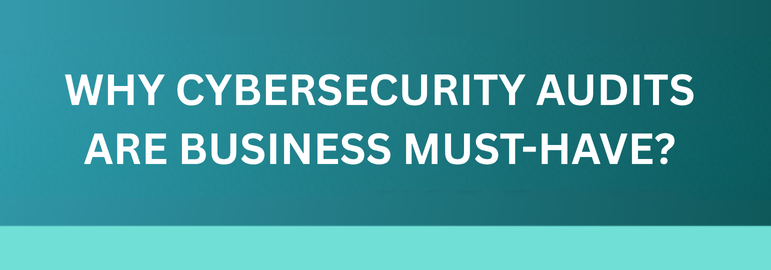
Let’s face it. Data today is more valuable than gold and more vulnerable than ever. With cyber threats growing in complexity and frequency, the digital space is no longer just a tech concern; it’s a business risk. Every login, every transaction, and every click leaves behind a digital trail that, if not safeguarded properly, could lead to something every organisation dreads: a data breach.
What Exactly Is a Cybersecurity Audit?
A cybersecurity audit is not just a checklist—it’s a deep, strategic evaluation of any organisation’s ability to defend itself in the face of a cyberattack. It examines the integrity of one’s systems, preparedness for threats and whether you’re meeting key compliance standards.
From internal auditing of policies to testing real-time vulnerabilities in networks, these audits provide a full-spectrum view of an organisation’s cyber health. Think of it as a wellness check-up for your digital ecosystem.
Why Do Cybersecurity Audits Matter Now More Than Ever?
Today, even the most cautious businesses can find themselves blindsided. Phishing emails, ransomware, insider leaks—threats no longer knock on the door, they break right in.
A robust cybersecurity audit uncovers hidden risks before they become disasters. It helps prevent a data breach, ensures regulatory compliance, and instills confidence across stakeholders—from clients to investors.
In sectors like banking, NBFCs, and housing finance—where data is sensitive and the stakes are high—the cost of non-compliance isn’t just financial, it’s reputational.
Scope of a Cybersecurity Audit: What Gets Examined?
A typical cyber security auditing process casts a wide net. It covers:
- Network security — Are your firewalls, routers, and encryption protocols solid?
- Data protection — How well are your customer and operational data stored, backed up, and secured?
- Access control — Who can access what, and is there a log of every access attempt?
- Incident response readiness — If a breach occurs, is there a clear plan in place to contain, investigate, and recover?
- Compliance posture — Are you aligned with industry-specific standards like SOC 2, GDPR, or HIPAA?
Types of Cybersecurity Audits
There isn’t a one-size-fits-all approach here. Based on the depth and objectives, cybersecurity audits fall into different categories:
- Internal audits: Conducted by in-house or partnered professionals to gauge existing policies and their implementation.
- External audits: Independent evaluations, often mandated by regulations or clients, that bring unbiased insights to the surface.
- Framework-based audits: Aligned with structured protocols like SOC 2, NIST, or ISO 27001, ideal for businesses scaling globally or working in regulated environments.
The type of audit you need depends on your current IT maturity, risk exposure, and industry requirements.
How Is a Cybersecurity Audit Actually Done?
While every organization operates differently, most cybersecurity audits follow a structured and thoughtful approach.
It usually starts with defining the scope. This means identifying which systems, departments, and types of data will be examined during the audit. Once that’s clear, the next step is to identify any existing vulnerabilities. These might include outdated software, unpatched systems, open network ports, or weak access controls.
After identifying the gaps, the process moves into risk assessment. This involves evaluating how likely certain threats are, and how severe their impact could be if they occur. Once the risks are understood, the next step is to evaluate the existing controls. This includes reviewing the tools, processes, and people responsible for managing those risks.
Finally, the audit concludes with a detailed report. This document outlines all findings and offers practical recommendations, often ranked by urgency or potential impact.
A cybersecurity audit is more than just a technical check. It’s a deep review of how prepared your entire organization is to handle today’s digital threats.
Best Practices That Strengthen Cybersecurity Audits
-
Act on audit findings — An audit’s true value lies in how effectively you respond to what it reveals.
-
Schedule regular reviews — Cyber threats evolve quickly; your audit process should, too.
-
Maintain clear documentation — Keep track of findings, actions taken, and areas still under observation.
-
Remediate issues promptly — Address vulnerabilities as soon as they’re identified—don’t wait for a breach.
-
Promote shared responsibility — Cybersecurity isn’t just IT’s job. Everyone in the organisation should stay alert and informed.
-
Train your people — Conduct awareness programs so staff can spot phishing attempts, scams, or abnormal activity.
-
Run simulation drills — Test your incident response through mock attacks to see how your team holds up.
-
Control access smartly — Limit access based on roles and regularly review user permissions to prevent internal risks.
Compliance Isn’t Just Paperwork—It’s Protection
In today’s regulatory climate, compliance isn’t the end goal—it’s the baseline. Standards like GDPR, SOC 2, HIPAA, and RBI’s cybersecurity framework are meant to strengthen business resilience.
Failing to meet these can lead to penalties, lost trust, and strained partnerships. Regular cybersecurity audits help businesses stay compliant, secure, and future-ready.
The Real Value of Cybersecurity Audits
At the end of the day, a cybersecurity audit is more than just a checklist. It’s a chance to truly understand how secure your business is. It shows you what’s working, what needs fixing, and where the real risks lie. With that knowledge, you’re in a much better position to make smarter decisions, protect your data, and build trust with everyone who relies on you.
In a world where cyber threats are only getting smarter, staying one step ahead isn’t just good practice—it’s essential. And it starts with a proper audit.